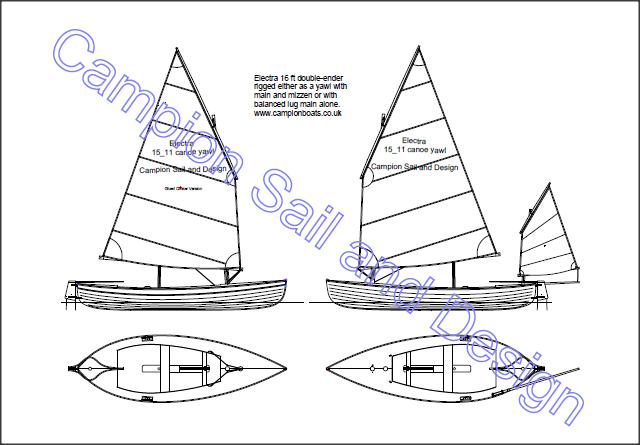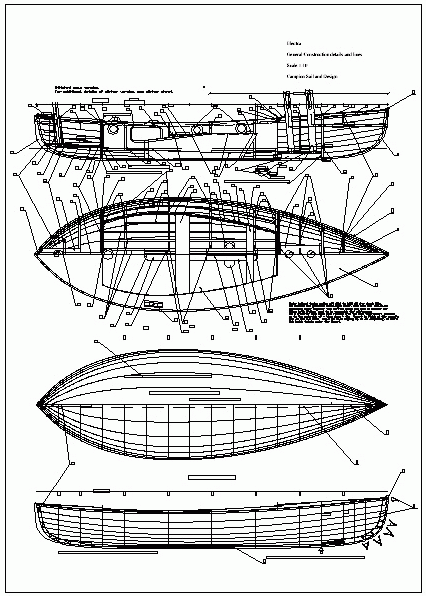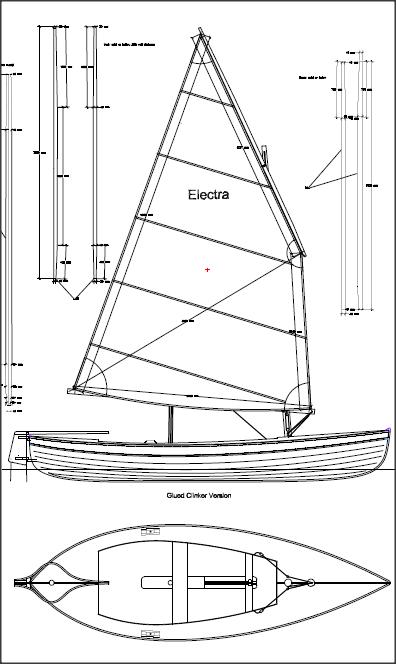
Campion Sail and Design
Canoe Yawl Electra - a fast double-ended lug rigged yawl

Electra: with a lower, flatter and fuller floor, the lines of this canoe yawl could be likened to a compomise between George Holmes' Ethels 1 and 111, but she is longer - with more freeboard - slightly beamier and certainly more burdensome with a sharper, deeper bow for better windward work as well as a drier, more comfortable performance in a steep chop. For 7 plank multi-chine or glued clinker. Stable yet fast, attractive and able, light yet strong, the seven plank aside hull goes together reasonably quickly to give a satisfying traditional appearance with modern materials. Sealed tanks run under the side decks for a good part of the hull to provide buoyancy and strength. Provision has been made for 55 kg of water ballast if required. These hulls give a true planing performance if sailed hard, whilst retaining the noted sea-kindliness of the double-ender if sailed more gently.


Loa: 15 ft 11 or 4846 mm; beam: 5 ft 2 or 1565 mm; maximum designed displacement: 880 lbs or 400 kg; sail area: 118 sq ft or 11 sq m.
The clinker hull is shown with a single balanced lug sail, and the stitched version with the main and mizzen rig as used by canoe yawls and some traditional fishing craft which were often sailed single-handed. As a long centreboard case rather than a daggerboard case has been chosen, either hull may be built upside down over a few well spaced frames. The multichine hull, taped or glass-sheathed externally,has been lined off to give the appearance of close-seamed carvel while the glued clinker with both gunwale and lower rubbing strips has an appeal of its own. The lines, offsets and sail plans of a 19 ft by 6 ft version have been drawn up, too, consisting of 4 A1 sheets covering sail plans, strake layout, lines and mould/frame set-up plus 1 A1 study sheet, though no dedicated construction plan nor keyed instruction sheet is currently offered for this version.
The full plans for the 16 consist of seven A1 sheets plus lines offsets and strake offsets and 15 A4 sheets of keyed construction detail and notes. There is no guess work or trial and error in the lining out of the planks for the clinker version as the position of the plank edges is clearly defined on the moulds
































